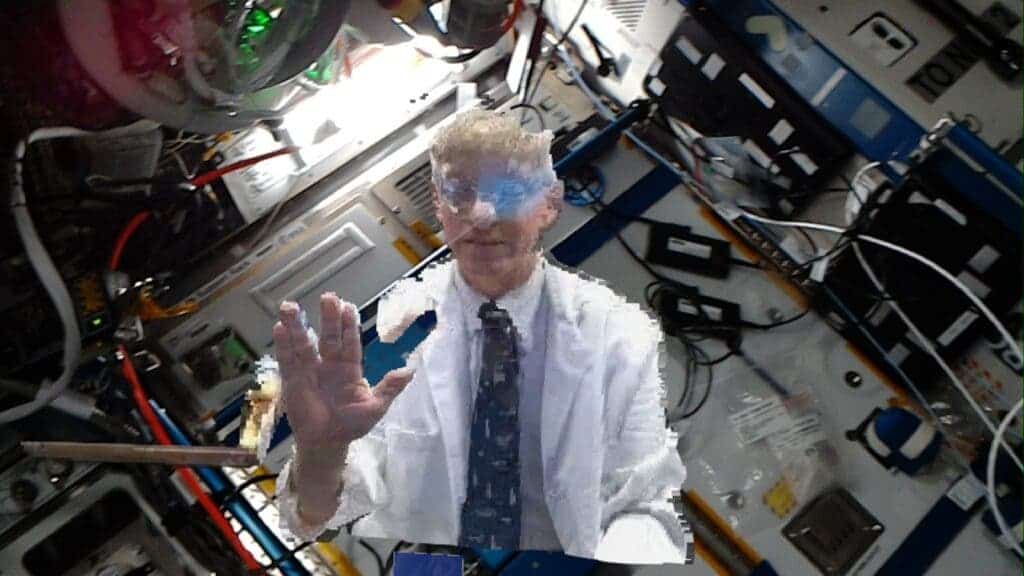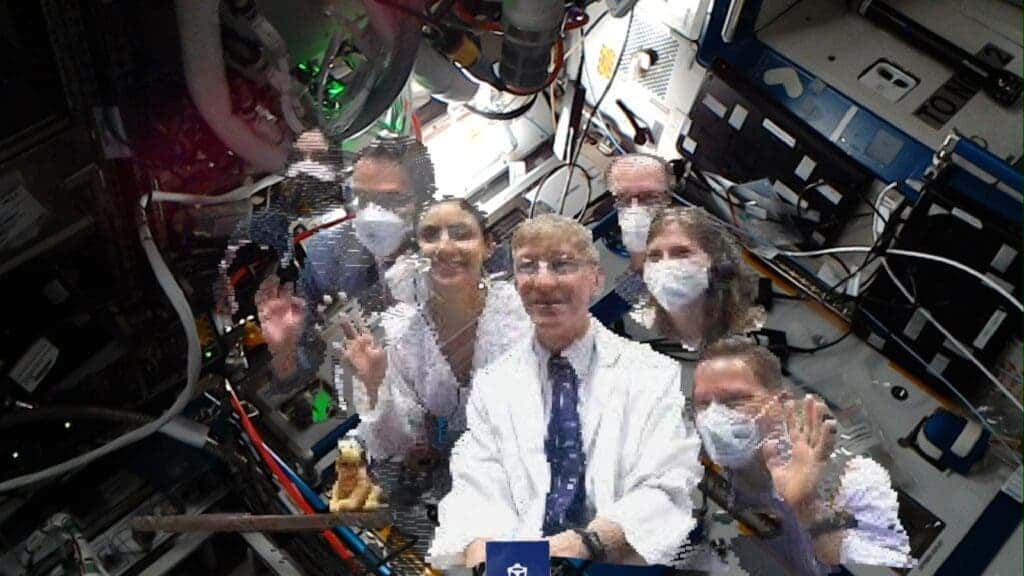Last year, astronaut Thomas Pesquet at the International Space Station (ISS) interacted with NASA’s flight surgeon Dr. Josef Schmidt. But this wasn’t a regular call. Schmidt’s hologram (and his team) was projected on the ISS while he was comfortably sitting on Earth, a technology known as “holoportation” — which NASA has very high hopes for.

The revolutionary system has been envisioned by sci-fi fans out there since “Star Trek: Voyager” where the doctor character simply known as “The Doctor” or “Doc” was projected as a hologram. Doc’s main task was to provide short-term advanced assistance during emergencies on several Federation starships. Now, NASA may do the same thing on the International Space Station.
Microsoft first came up with the idea of holoportation in 2016, hoping to revolutionize sectors like education, terrestrial hospital care, and advertising. Now, NASA took things a step further, using the technology in space. This was the first time holoportation has successfully brought people beyond planet Earth, and it won’t likely be the last one.
“This is a completely new manner of human communication across vast distances,” NASA flight surgeon Dr. Josef Schmid, one of the doctors on the team who were projected into the ISS, said in a statement. “Furthermore, it is a brand-new way of human exploration, where our human entity is able to travel off the planet.”
A virtual doctor
Schmid participated in this transdimensional journey with Fernando De La Pena, CEO of AEXA Aerospace, a company that helped develop the holoportation equipment, and other team members. Using a camera and a personal computer, astronaut Pesquet had a two-way conversation with live images of Schmidt and De La Pena at the ISS.
Holoportation allows high-quality 3D models of people to be reconstructed, compressed and transmitted live anywhere in real-time, Schmidt in a NASA statement. When used with mixed reality displays, it allows users to see, hear, and interact with remote participants in 3D as if they are actually present in the same physical space.
“Our physical body is not there, but our human entity absolutely is there. It doesn’t matter that the space station is traveling 17,500 mph and in constant motion in orbit 250 miles above Earth, the astronaut can come back three minutes or three weeks later and with the system running, we will be there in that spot,” Schmidt said.

Going forward, NASA hopes to scale up the system by adding an augmented reality function. This would allow holoporters to move around the ISS and see things as though they are physically there. This would benefit telemedicine for astronauts, ISS building projects, and future deep space exploration, as standard radio comms typically have a 20-minute delay.
Holoportation could also have direct applications on Earth, NASA said. This type of technology could help people in remote environments to communicate, such as researchers working in Antarctica and military operation specialists. Further research will likely be needed but for now, this was a good start for an exciting technology.
“Imagine you can bring the best instructor or the actual designer of a particularly complex technology right beside you wherever you might be working on it,” Schmidt said. “Furthermore, we will combine augmented reality with haptics. You can work on the device together, much like two of the best surgeons working during an operation.”









